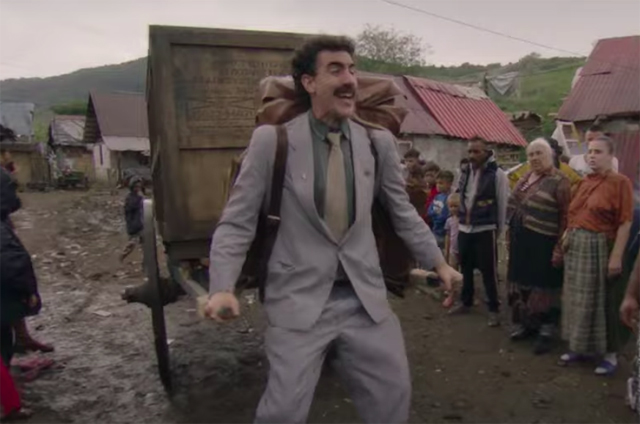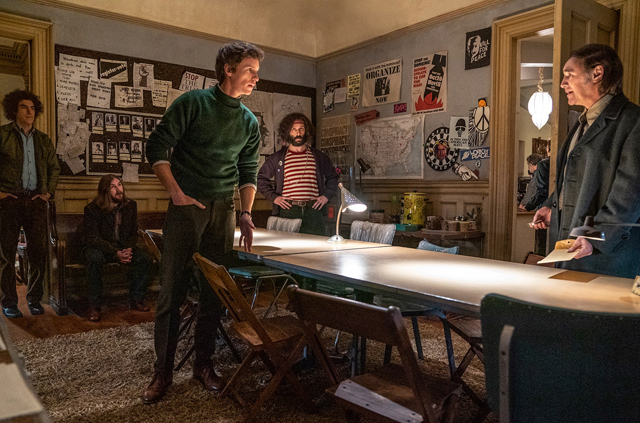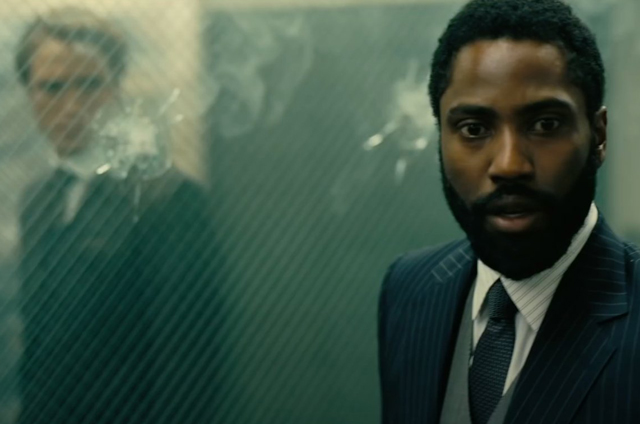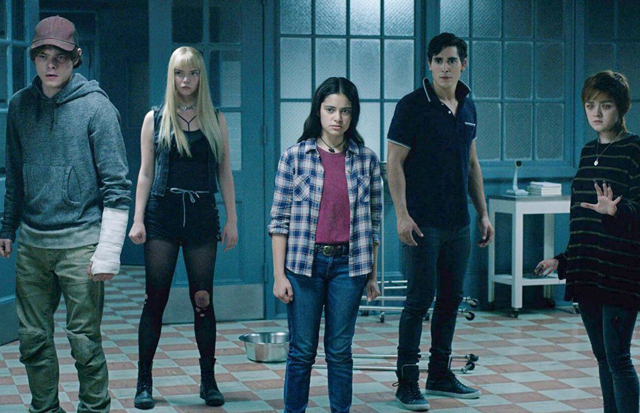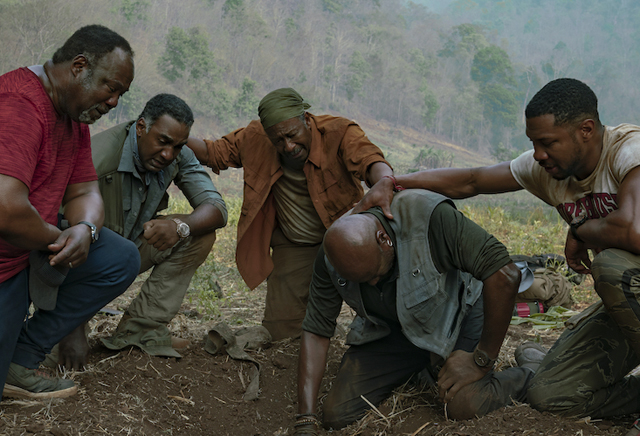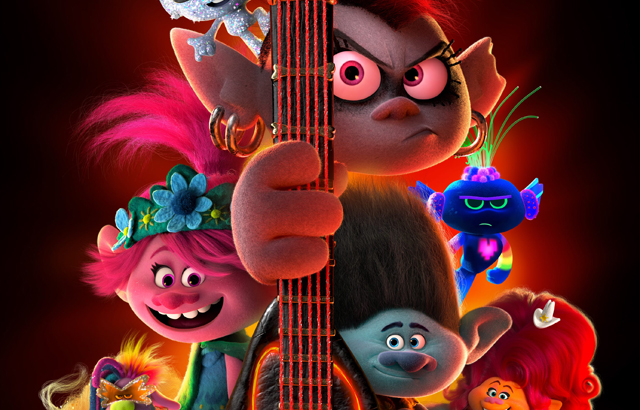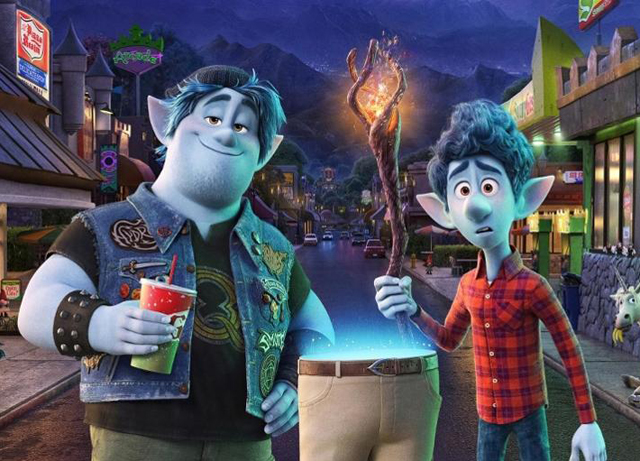
What are some of the benefits that may come from the shift to online streaming as the dominant form of content distribution in the film industry? The pandemic year of 2020 has given Hollywood a reckoning with where it’s future will lie. There is no doubt that the closure of theaters has put streaming into a more central role, though it’s still too early to say if that is sustainable. Even still, it has given the industry itself pause as to what it needs to do to return to a sense of normalcy, and it probably involves changing their way of thinking about what kind of movies that need to be made and what is the best way to bring those movies to a wide audience. That’s something that the world of streaming has shown us, even before the pandemic hit. The last decade saw a glut of big budget blockbuster movies dominating the screens, and while these movies were successful in bringing people out of their homes and into a theater, it also lead to a significant lack of variety in the kinds of movies that were being made. Meanwhile, the kinds of movies that used to be found regularly on the big screen, but had over time disappeared (rom coms, screwball comedies, intimate thrillers), but were now suddenly thriving on places like Netflix and Amazon Prime. With big budget movies left waiting due to the pandemic, it’s these often forgotten movies that are having their day in the sun right now thanks to streaming, and it’s making the studios reconsider suddenly where their priorities are. In many ways, part of the story of 2020 is the revival of these often neglected sub genres, which are helping to fill the void left by the absence of the silver screen. And this includes a renewed appreciation for things that have often been treated as not commercially viable enough anymore, like animated movies that are sticking to traditional hand drawn styles instead of jumping on the CGI bandwagon.
One of the areas that streaming has thankfully been able to do is give more creative freedom to independent producers who operate outside of the shadow of Hollywood. After all, places like Netflix and Amazon want to distinguish themselves from the “big five” Hollywood studios, so they are eagerly seeking out production companies that are themselves unique and original. This has been especially fortuitous for animation companies, especially those who are not working with computer animation, which has been the dominant format in the last 20 years. One such studio that has carved out it’s own niche has been the Kilkenny, Ireland based studio Cartoon Saloon. The studio, co-founded by animators Tomm Moore, Paul Young, and Nora Twomey, began as a small animation farm outfit that provided services for clients such as Nickelodeon, The Disney Channel, and the BBC for various cartoon series on the networks. But in the late 2000’s, Cartoon Saloon decided to expand their reach as a production company by embarking on their first full length feature. What they planned to do was to create movies with a distinctive Irish character to them, drawn from the national folklore and ancient Celtic mythology, helping to put their country on the map cinematically in the field of animation. Their first film was The Secret of Kells (2009), a fictionalized telling of the creation of the legendary Book of Kells; an illuminated manuscript printing of the Bible that is one of Ireland’s most sacred national treasures. The film was a modest success, and it led to more well received animated features, including Song of the Sea (2014) and The Breadwinner (2017). Though not yet achieving the same kind of success as big studios like Disney and Dreamworks yet, each of their three movies so far have been Oscar nominated for Best Animated feature, and Cartoon has been affectionately dubbed by many in the film and animation industry as the Studio Ghibli of Ireland. Now, with the aid of a streaming giant backer (Apple in this case), Cartoon Saloon is releasing what may be their most ambitious feature yet, and one that may hopefully propel them further into the mainstream; their epic scale adventure, Wolfwalkers (2020).
In the late 17th century, the town of Kilkenny has been put under the thumb of the occupying army of English invaders. The Lord Protector (Simon McBurney) has squashed all rebellion in the area, and means to tame the resistant Irish population to bend to his rule. He does so by stoking fear amongst the citizens of Kilkenny of a dangerous pack of wolves that live on the outskirts of the town, and that only he and his army are the ones that can protect the village. He enlists his chief wolf hunter, Bill Goodfellowe (Sean Bean) to set traps around the town. Goodfellowe is loyal to his master’s commands, but he also has to balance being a devoted father to his restless daughter Robyn (Honor Kneafsey) who desperately wants to follow in her father’s footsteps and become a fearless wolf hunter herself. Despite her father’s demands to stay home, Robyn sneaks out of the town and follow after him. She carelessly ends up being caught in one of her father’s traps, and soon encounters a young wolf cub who helps her out of the trap. Robyn, confused by the nature of this unusual wolf cub, ends up following after her and discovers a secret den where there is a human mother and daughter sleeping. It turns out, the wolf cub is actually the little girl named Mebh (Eva Whittaker) who can assume a wolf form while she is asleep. She helps Robyn return safely to her village, while also convincing her that the wolves are not a threat and are merely just trying to survive the loss of their forest due to the expansion of the Lord Protector’s plans for more farming. Robyn returns to her home and hopes to convince her father of what she discovered, but her father doesn’t believe the story. Meanwhile, while having to serve as a scullery maid in the Lord Protector’s manor, she makes the horrifying discovery that the Lord is holding Mebh’s mother Moll (Maria Doyle Kennedy) captive. What follows is an attempt by the two girls to free the captive wolf mother, which leads to many magical twists and turns, which ends up defining what it really means to be a Wolfwalker.
You can see very clearly that this is a movie deeply infused with an Irish identity. Not only does it touch upon Irish folklore and myth with the idea of the Wolfwalkers themselves, but it also draws upon real Irish history, with the conquest of the Ireland under the brutal tyranny of Oliver Cromwell as it’s backdrop. But the pleasing thing is that you don’t have to be a scholar in Irish society and tradition in order to have a good time watching this movie, because it is just an all around triumph of storytelling. The movie, directed by studio founder Tomm Moore and Cartoon Saloon newcomer Ross Stewart (who came from an equally beloved independent animation studio called Laika), definitely feels like a big step forward for the burgeoning studio. Secret of Kells, Song of the Sea, and The Breadwinner were all modest productions, despite featuring some truly breathtaking and imaginative imagery. Wolfwalkers strives to be bigger and grander in every way, in both scale and story, and it definitely succeeds at that. To me, this movie had the feel of Disney at their height in the Renaissance period, minus the musical numbers. Though the main characters are still an intimate and uncrowded number, they are surrounded by a supporting cast of thousands and a much larger canvas overall. The settings of this movie, from the town of Kilkenny to the enchanted forest dwelling of the wolves just feels grander than anything we’ve seen from Cartoon Saloon before, and yet it still maintains their very distinct style. Director Tomm Moore has said in interviews that Wolfwalkers is their attempt to do everything they could do but haven’t been able to so far due to either budget restraints or it not servicing the story. With Apple’s deep pockets helping to back them this time, they are finally able to make a movie with more ambition to it, but with the same kind of care and detail that they devoted to their more modest films.
One thing that will really take your breath away while watching the movie is just the stunning beauty of the film all around. This is definitely one of those “every frame is a painting” kind of movies, reminiscent of films like Disney’s Sleeping Beauty (1959). Cartoon Saloon has worked with this very Celtic inspired motif through many of their films before, but they turn it up to 11 with Wolfwalkers. Pretty much every single scene features a new creative idea that you didn’t expect, and it keeps you captivated from beginning to the end. At the same time, it doesn’t overwhelm the rest of the movie either, as the story is still able to find it’s way. I was amazed just how well the visuals of the movie doesn’t distract from the story-telling, but rather elevates it, in the way that the best animated movies do. In many ways, this is something that has been lacking in animation for a while, as Computer Animation has in many way homogenized the industry. While there are still many good CGI animated movies out there, the sheer dominance of the format has unfortunately made so many of the movies look the same; to the point where you can’t tell one studio’s style from the other. The same cannot be said about hand drawn animation. Every studio has their unique in-house style, even if some try to copycat the likes of Disney. This is also true of international animation, with Japan defining it’s identity through their creation of the Anime style. That’s what’s so pleasing about what Cartoon Saloon is doing. Their animation style is all their own, and it is unapologetically Irish. I especially love the lushness of the woods, which intertwines and loops around in a way that evokes Celtic design in a very strong way. The rigidness of Kilkenny in the movie also has it’s own story-book like feel; something that only hand drawn animation can capture. It is possible to make Computer Animation capture this same feel, as Spider-Man: Into the Spiderverse (2018) brilliantly illustrated, but what Wolfwalkers really exposes is the fact that very few animated movies today really take full advantage of what the medium is capable of because of all that homogeny, and that it is essential for movies like it to remind us of what we are missing.
One of the things that I think really helps to carry the movie through is the wonderful cast of colorful characters in the film. Robyn Goodfellowe certainly follows in a long line of strong independent female heroines in animated movies, but the animators and voice actress Honor Kneafsey do a great job of making her more than one note. She is a character that actually goes through a lot of growth in the movie, both naturally and supernaturally. She also manages to balance well off the performance of Eva Whittaker as Mebh, who is just as wild and unpredictable as her character should be. I especially like the design of the character Mebh, whose billowing red hair becomes almost a character in her own right. She also has these wild looking, massive eyes that really connects her to her Wolf persona. Whether she’s in fur or in human skin, she is easily identifiable. The characters also make a really good balance between being cartoonishly funny and heartbreakingly sincere, which is a real testament to the talents of the animators. I also like the way they portray the stoicism of Bill Goodfellowe, making him strong but also sympathetic, helping to define the divisions and the connections that he shares with his daughter. Certainly animating to Sean Bean’s voice can’t be easy, due to his often understated acting style, but they make it work. I was also especially pleased that this is an animated movie with a very strong villain at it’s center. The Lord Protector, though not specifically stated to be based on Oliver Cromwell, certainly borrows many visual connections to the notorious dictator, and like most animated villains, he is visualized as dark and shadowy. He’s a nice throwback to the classic Disney villains of the Renaissance period, specifically reminding me of Frollo from Hunchback of Notre Dame (1996), and actor Simon McBurney does a great job of bringing effective menace to the character.
I should point out that Wolfwalkers only invokes the same feeling that we get from the classic Disney animated films, and is not just a copycat. This is an animated movie that really carves out it’s own identity. What worked for Disney so well during it’s Renaissance period was the fact that they were embracing what they were capable of in their medium and using it to tell stories that appealed to a wide audience. But, at the same time, they too began to fall back on playing it safe and making each movie just like the one before it. This has been true of an industry that over time has favored marketability over artistry. The era of Computer Animation has held a firm grip on what kinds of animated movies get greenlit, because for the most part, they are the ones that can reliably bring people back to the theaters week in and week out. Disney tried to revive hand drawn animation briefly with The Princess and the Frog (2009), but it’s modest returns were not enough to turn the tide. The 2020 pandemic may however be the thing that gives the studios pause. We are already seeing a variety of different animated films popping up on Netflix, mostly as acquired assets though a few other have been spear-headed by the streamer directly. Cartoon Saloon’s next film in fact, My Father’s Dragon (2021) will be a Netflix exclusive. Disney has also been forced by the conditions of the pandemic to premiere their new Pixar film, Soul (2020) exclusively on their streaming platform Disney+. We are seeing playing out right now a real test of what the future of animation will be like. Can computer animation survive without the movie theaters, or will more independent fare like Wolfwalkers become more of what we see in the years ahead. Certainly, the fact that everyone is tuning in to streaming platforms instead of going out to the movies is putting a spotlight on movies like Wolfwalkers that it otherwise wouldn’t have had, and that may be something that really ends up being a game changer in the end. AppleTV+ certainly isn’t in the realm of Netflix, Amazon, or even Disney+ yet, but with a quality must see film like Wolfwalkers made exclusively for it, it certainly will draw more positive attention their way.
Regardless of how we are able to watch it, I strongly recommend that you check out Wolfwalkers if you can. Thus far, it is the best animated movie that I have seen this year, and that includes a film released in the Spring from Pixar (Onward). Just the fact that it shows that there is still life in the medium of hand drawn animation, and that the market has been desperately lacking such a movie within the mainstream for a long time, is enough to make any of you interested in seeing it. It has the ambition and grandeur of Disney at their best, while at the same time maintaining it’s distinctive Irish character. Cartoon Saloon has a bright future ahead of it if they continue to make movies of this caliber. Though all of their movies thus far have been exceptional, this one takes it to the next level and really shows what they are capable of. I highly expect that they are going to be 4-4 in Oscar nominations when Awards season kicks into gear next spring, and they may have their best case yet for taking home Oscar gold finally. Right now the movie is having a limited theatrical run in the United States, which may be even more limited now because of the increased lock downs across the country that are re-shutting down many movie theaters. If it’s important for you to see something like this on the big screen, I highly recommend it, but with the caveat that you should only go if you can do so safely. I lucked out in seeing it at a local Drive-In, so there’s that option if available. Starting December 11, it will then be available for AppleTV+ subscribers, as well as available to buy exclusively on iTunes. Like all the best animated movies, it is perfect for audiences of all ages, although I do commend the filmmakers for not shying away from darker themes, which really serves the movie well and earn it a PG rating. Time will tell if these are the kinds of movie that change animation in this period of flux. Will Wolfwalkers create a new Renaissance of hand drawn animation, or is it just a fleeting but nevertheless worthwhile reminder of what animation used to be like?
Rating: 9/10
